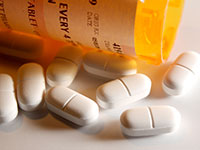Chronic Discomfort Chronic discomfort is pain (an undesirable feeling of pain) that progresses or persists over an extended period of time. Unlike acute pain that arises unexpectedly in feedback to a details injury and also is generally treatable, persistent pain continues with time and also is typically immune to clinical therapies.
What is the best pain medication for chronic pain?
Tricyclic antidepressants used in the treatment of chronic pain include amitriptyline and nortriptyline (Pamelor). Serotonin and norepinephrine reuptake inhibitors (SNRIs) that may be prescribed to relieve chronic pain include duloxetine (Cymbalta), venlafaxine (Effexor XR) and milnacipran (Savella).
Endorphins are the main endogenous opioids your nervous system secretes in reaction to sex, a tasty meal, and also other kinds of pleasure. Since opiate medications turn on the very same Mu receptors endorphins do, bliss and also a profound feeling of health are possible side effects of all the opiate medicines on the market. Neither tramadol neither codeine need to be taken with alcohol or various other sedatives or tranquilizers since they might possibly magnify the impacts. Side effects for both medications-- in addition to prospective dependency-- may consist of dizziness, complication, sedation, constipation and also others.
What is the strongest muscle relaxer medication?
Tramadol is a synthetic (man-made) pain reliever (analgesic). Tramadol is not a nonsteroidal anti-inflammatory drug (NSAID), therefore, it does not have the increased risk of stomach ulcers and internal bleeding that can occur with NSAIDs.
Temporary usage of tramadol and also codeine for coughing or modest discomfort symptoms comes with a relatively reduced danger of addiction or withdrawal since of this. Codeine, tramadol, morphine, as well as all various other poppy by-products target and turn on mainly the Mu receptors, meaning they are "Mu receptor agonists."
Regularly, both oxycodone and also hydrocodone are integrated with other painkillers or chemicals. Pure oxycodone is offered in a brand drug called Oxycontin. Today, both hydrocodone as well as oxycodone are routine II medications. Schedule II drugs have a high possibility for being mistreated.
Most Current Medications News
- Application (typically 0.4 to 2 milligrams IV, IM, IN, or nebulized) might need to be repeated every 2 to 3 minutes as much as 20 milligrams.
- When used, bigger doses of naloxone may be needed compared to various other opioid overdoses.
- Stomach lavage might be advantageous in large (over 2.5 grams) recent consumptions.
- Of note, there is some dispute over using naloxone in tramadol overdoses for its academic potential to precipitate seizures.
Can you take Tramadol at night?
Gabapentin and tramadol are used to treat different types of pain. Tramadol is an opioid pain reliever (analgesic) used to manage moderate to moderately severe pain. Brand names for gabapentin include Neurontin, Horizant, and Gralise. Brand names for tramadol include Ultram and ConZip.
Food and Drug Administration, the medication has to include the same stamina of active ingredients, but may not have the exact same amount of inactive components. When taken at equivalent dosages, another study located that the combination of oxycodone and acetaminophen was 1.5 times more powerful than hydrocodone with acetaminophen.
This means the tramadol is slowly launched into your body over either 12 or 1 day. This kind of tramadol takes longer to begin working however lasts longer. Tramadol decreases, injections and also some pills as well as tablets are fast-acting.
Why does nerve pain get worse at night?
Conclusion: In healthy volunteers, a single dose of tramadol 50 mg disturbs sleep in the night of drug application. With 100 mg, sleep is disturbed in both the night of drug application and in the subsequent night.
Little of the medicine reaches the bloodstream, so cognitive negative effects are prevented. Numerous applications are generally required for considerable discomfort alleviation. Adverse effects and risks with antidepressants might include, yet are not limited to, heart troubles, irregularity, drowsiness, light-headedness, weight gain, dry mouth, as well as queasiness.
What is the difference between OxyContin and oxycodone?

Oxycodone is an opiate agonist that is the active ingredient in a number of narcotic pain medications, including Percocet, Percodan, and OxyContin. OxyContin is a specific brand name for a pain medication in the opioid class (narcotic drugs) that contains the extended-release version of oxycodone.
